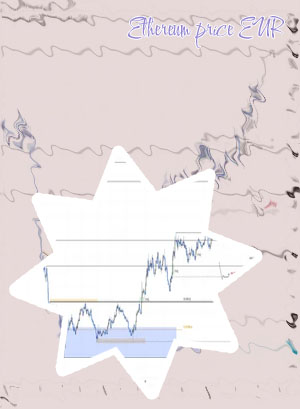
Understanding the intricacies of the Ethereum graph is crucial for anyone looking to navigate the world of cryptocurrencies. These three articles provide in-depth insights into different aspects of Ethereum's graph, from its technical foundations to its market trends and potential future developments. Whether you're a beginner or an experienced investor, these resources will help you gain a better understanding of how Ethereum's graph works and how it can impact your investment decisions.
Exploring the Ethereum Graph: A Technical Overview
The Ethereum blockchain has gained significant attention in recent years due to its smart contract capabilities and decentralized applications. "Exploring the Ethereum Graph: A Technical Overview" provides a comprehensive insight into the underlying structure of Ethereum and how its data can be analyzed using graph database techniques.
The article delves into the concept of graph databases and their application in understanding the relationships between Ethereum transactions, addresses, and smart contracts. By mapping out these connections, developers and researchers can gain valuable insights into the behavior of the Ethereum network and identify potential patterns or anomalies.
One practical use case for exploring the Ethereum graph is in detecting fraudulent activities or suspicious transactions. By analyzing the flow of funds between different addresses and smart contracts, researchers can identify potential money laundering schemes or fraudulent activities. In a recent study, researchers were able to uncover a Ponzi scheme operating on the Ethereum network by tracing the movement of funds through the graph database. This resulted in the scheme being shut down and investors being protected from further losses.
Overall, "Exploring the Ethereum Graph: A Technical Overview" is a valuable resource for anyone looking to gain a deeper understanding of the Ethereum blockchain and its data structure. By leveraging graph database techniques, researchers can unlock new insights and uncover hidden patterns within the Ethereum network.
Analyzing Ethereum's Graph Performance: Trends and Patterns
Ethereum, the second-largest cryptocurrency by market capitalization, has been at the forefront of the blockchain revolution since its inception in 2015. One of the key aspects of Ethereum's success lies in its ability to process transactions quickly and efficiently through its innovative graph performance. In this article, we will delve into the trends and patterns of Ethereum's graph performance to gain a better understanding of its underlying technology.
-
Network Growth: Ethereum's graph performance has seen exponential growth over the years, with an increasing number of transactions being processed on the network. This growth is a testament to the scalability and efficiency of Ethereum's graph performance.
-
Transaction Throughput: Ethereum's graph performance has enabled it to achieve high transaction throughput, allowing for a large number of transactions to be processed simultaneously. This high throughput is crucial for ensuring quick and seamless transactions on the network.
-
Gas Fees: One of the key challenges faced by Ethereum users has been the high gas fees associated with transactions. Analyzing Ethereum's graph performance can help identify trends in gas fees and optimize transaction costs for users.
-
Smart Contract Execution: Ethereum's graph performance plays a crucial role in the execution of smart contracts, which are self-executing contracts with the terms of the agreement between buyer and seller being directly
Future Prospects of Ethereum's Graph: What to Expect in the Coming Years
As Ethereum continues to dominate the world of cryptocurrency, investors and enthusiasts alike are eager to learn about the future prospects of its graph. With its decentralized platform and smart contract capabilities, Ethereum has positioned itself as a key player in the digital currency market. So, what can we expect from Ethereum's graph in the coming years?
-
Continued Growth: Ethereum's graph is likely to experience continued growth as more developers and businesses adopt its platform for various applications. The increasing demand for decentralized finance (DeFi) projects and non-fungible tokens (NFTs) is expected to drive the value of Ethereum's graph higher.
-
Upgrades and Improvements: The Ethereum network is constantly evolving, with upgrades such as Ethereum 2.0 aimed at improving scalability, security, and sustainability. These improvements are likely to enhance the performance of Ethereum's graph and attract more users to the platform.
-
Competition and Challenges: While Ethereum remains a frontrunner in the cryptocurrency space, it faces competition from other blockchain networks such as Binance Smart Chain and Solana. As such, Ethereum will need to innovate and adapt to stay ahead of the curve and maintain its market dominance.
-
Regulatory Environment: The regulatory environment surrounding cryptocurrencies is still uncertain in many countries. As governments around the

